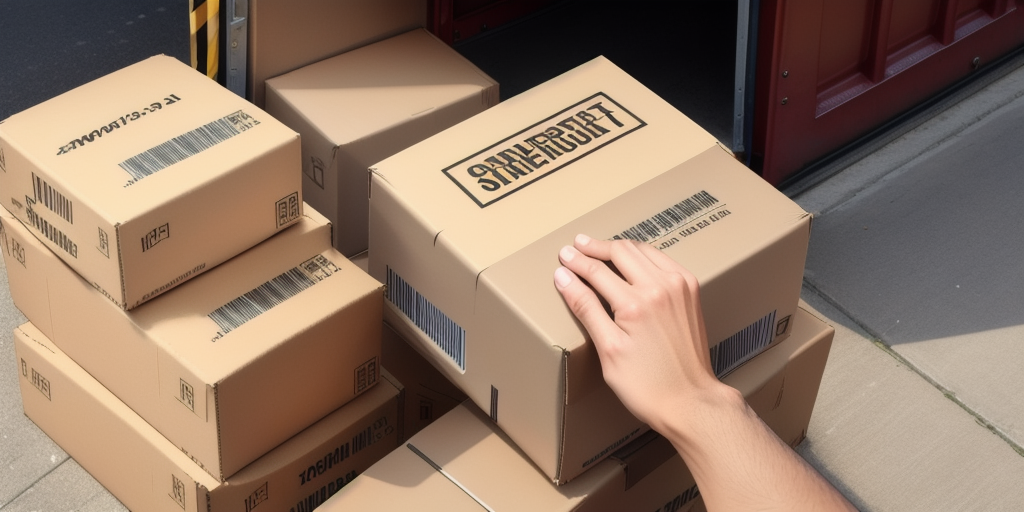Understanding Shipment Exceptions
Shipping goods is a critical aspect of any business, yet it can sometimes be fraught with challenges. One such challenge is encountering a shipment exception, which can disrupt the timely delivery of packages. This article provides an in-depth analysis of shipment exceptions, exploring their causes, types, tracking methods, resolution strategies, preventive measures, and their impact on businesses and customers.
Common Causes of Shipment Exceptions
Unexpected Volume Spikes
During peak seasons or unexpected surges in demand, shipping carriers may experience capacity issues, leading to shipment delays.
Incorrect Addresses or Documentation
Errors in shipping addresses or incomplete customs documentation can cause packages to be delayed or returned. Ensuring accurate and complete information is crucial for smooth transit.
Weather and Natural Disasters
Adverse weather conditions like hurricanes, snowstorms, or floods can disrupt transportation routes, causing significant delays in shipments.
Package Damage
Improper packaging or mishandling during transit can result in damaged goods, necessitating returns or replacements which extend delivery times.
Regulatory Compliance Issues
Shipping regulated or prohibited items without proper compliance can lead to shipments being held or rejected by authorities. Adhering to international shipping regulations is essential to avoid these issues.
Types of Shipment Exceptions
- Late Package Delivery: Delays beyond the expected delivery date.
- Damaged Package: Physical damage occurring during transit.
- Held by Customs: Packages delayed at customs due to documentation issues or regulatory compliance.
- Refused Delivery: Recipients declining to accept the package.
- Incorrect Address: Deliveries failing due to incorrect or incomplete address information.
- Undeliverable Package: Packages that cannot be delivered for various reasons and are returned to the sender.
Each type of exception requires specific resolution processes and may incur additional fees. Understanding the nature of the exception helps in determining the appropriate course of action.
Tracking and Resolving Shipment Exceptions
How to Track a Shipment Exception
Monitoring your shipment's status is the first step in addressing exceptions. Utilize the tracking number provided by your shipping carrier to access real-time updates through their online tracking tools. These platforms can help identify the specific exception causing the delay.
For more detailed tracking, consider using advanced shipment exception management systems that offer notifications and proactive alerts.
Resolving Shipment Exceptions Quickly
The resolution process varies depending on the type of exception:
- Incorrect Address: Contact the carrier immediately to provide the correct address.
- Held by Customs: Submit any required documentation or fees promptly to expedite clearance.
- Damaged Package: Initiate a claim with the carrier and arrange for a replacement or refund.
Collaborating closely with the carrier and maintaining open communication with the recipient can significantly reduce the resolution time.
Duration and Factors Influencing Shipment Exceptions
Typical Duration
Shipment exceptions can last from a few hours to several weeks, depending on the underlying cause. For instance, minor address corrections might be resolved within a day, whereas customs holds could extend over several weeks.
Influencing Factors
- Type of Exception: Different exceptions have varying resolution times.
- Carrier Capacity: The ability of the carrier to handle exceptions efficiently affects duration.
- Package Location: Remote or hard-to-reach areas may experience longer delays.
- External Conditions: Weather conditions and natural disasters can prolong exception durations.
- Accuracy of Information: Providing complete and correct information speeds up the resolution process.
Awareness of these factors can help in strategizing effective ways to minimize delays.
Preventing Future Shipment Exceptions
Proactive measures can significantly reduce the likelihood of encountering shipment exceptions:
- Ensure Accurate Information: Double-check addresses and documentation before shipping.
- Partner with Reputable Carriers: Collaborate with carriers known for reliability and efficient handling.
- Implement Effective Packaging: Use sturdy packaging materials to protect goods during transit.
- Invest in Technology: Utilize track and trace systems to monitor shipments in real-time.
- Train Your Team: Regular training ensures that your shipping team follows best practices.
Adopting these strategies can lead to a more streamlined shipping process and enhance customer satisfaction.
Impact of Shipment Exceptions on Business and Customers
Shipment exceptions can have several adverse effects on businesses and their customers:
- Financial Losses: Costs associated with delays, returns, and replacements can impact profitability.
- Customer Trust: Frequent delays or damaged goods can erode customer trust and loyalty.
- Operational Disruptions: Managing exceptions diverts resources from other critical business activities.
- Reputation: Negative experiences may lead to poor reviews and damage the business’s reputation.
To mitigate these impacts, it is essential to handle shipment exceptions promptly and maintain transparent communication with customers regarding the status of their orders.
In conclusion, while shipment exceptions are an inherent risk in the shipping process, understanding their causes, types, and resolutions can help businesses navigate these challenges effectively. Implementing preventive measures and maintaining robust tracking systems are key to minimizing disruptions and ensuring customer satisfaction.








